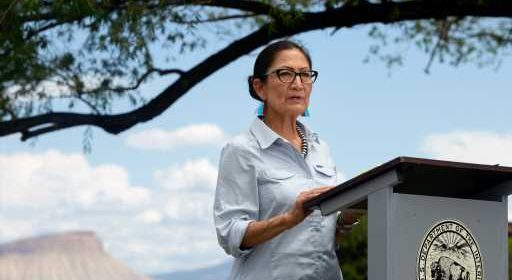BLM headquarters vacancies more than doubled with move, GAO report finds

GRAND JUNCTION, Colo. (AP) — The number of vacant Bureau of Land Management headquarters positions more than doubled as the agency moved those jobs to Grand Junction and other locations in the West, before declining somewhat but not to the prior level, a new Government Accountability Office report has found.
The report points to impacts in decision-making due to the loss of headquarters and experienced staff during organizational changes the agency made after 2016. It also identifies decreased representation of some races and ethnicities within the headquarters and/or agency in recent years, but also gains in representation of some groups, The Grand Junction Sentinel reports.
Notably, the GAO report also shows that a higher percentage of headquarters employees agreed to move west than the Interior Department had indicated earlier this year. That’s because the Interior Department in providing those earlier numbers didn’t take into account the headquarters vacancies that existed before the move began.
In July 2019, the Trump administration announced its decision to move the agency’s headquarters from Washington, D.C., to Grand Junction, distributing headquarters jobs to Grand Junction and elsewhere around the West. The administration cited the desire to put top BLM decisionmakers closer to the lands they manage and communities their decisions affect, but critics feared the move would weaken the agency in part due to the loss of headquarters employees unwilling to move.
The Trump administration decided to move some 40 headquarters jobs to the city, and it opened the headquarters office on Horizon Drive in January 2020. In September, Interior Secretary Deb Haaland, who as a congresswoman had opposed moving the national headquarters west, announced the headquarters was being moved back to Washington, although Grand Junction will serve as a western headquarters.
The GAO reported that headquarters vacancies increased from 121 in July 2019 to 326 in March 2020, a jump of about 169%.
“BLM gradually reduced these vacancies; however, the number of vacant positions remained at 142 as of May 2021, or about 17% higher than when the agency announced the relocation,” it said.
GAO reported that altogether, 328 BLM headquarters positions were reassigned to western states or reallocated as state positions, and 41 people accepted reassignment. But it said that of the 328 reassigned or reallocated positions, 134 were already vacant before the relocation, the BLM reallocated 17 headquarters positions already located in state BLM offices to state positions, and one position was pending administrative action as of May. That left 176 staff who needed to relocate, and 23% of those — the 41 — accepted reassignments, the GAO said.
The Interior Department in January, shortly after President Biden took office, said the Trump administration moved 328 positions out of Washington, and 41 people moved, with the remaining 287 retiring or finding new employment. It made no mention of vacant positions.
Responding to a inquiry by The Daily Sentinel about the discrepancy, a BLM spokesman concurred with the GAO numbers, saying the reassigned positions include vacant ones and reallocated people already in state offices.
While the headquarters move contributed heavily to vacancies, the GAO notes that various hiring restrictions/freezes, in both the Trump and Biden administrations, also have played roles.
The GAO said the BLM was able to fill some vacancies created by separations involving people not willing to move. But as of January, the total permanent headquarters workforce was 441, down from 537 in July 2019. Total headquarters numbers include positions that the Trump administration kept in Washington after the relocation or already were located outside of Washington previous to the move.
The GAO said that all of the BLM staff it interviewed spoke of challenges completing their duties due to headquarters vacancies after 2016.
“For example, most staff told us that vacancies in key headquarters positions caused delays in creating or clarifying guidance or policy. One staff member told us that, in some cases, the staff member’s office relied on outdated policy guidance in order to make decisions,” the GAO said.
It said that from January 2016 to January 2021, the number staff with at least 25 years of service within Interior fell from 171 to 113, or nearly 34%, in the BLM headquarters, and the number of experienced staff in state offices fell by more than 29%.
The report found that the number of Blacks on the headquarters staff fell from 116 in July 2019 to 55 by this January, and Asian representation also declined. Agency-wide from January 2016 to January 2021, Black representation in the workforce fell by about 6%, but representation of Latinos increased by about 17%, and Asian representation grew by about 18%.
The GAO is recommending that the BLM better track things including vacancies in all offices, and develop a strategic workforce plan with long-term staffing strategies.
The BLM issued a statement Thursday saying that the GAO report on the previous administration’s move of the headquarters “validated that the relocation reduced diversity, created unacceptable vacancies, and drove many experienced employees out of the Bureau. The Bureau agrees with the GAO report findings and is already working to address recommendations. The BLM is committed to moving forward in a thoughtful and deliberate way working with employees, Tribes, elected officials and stakeholders as we work to repair the damage.”
Source: Read Full Article
